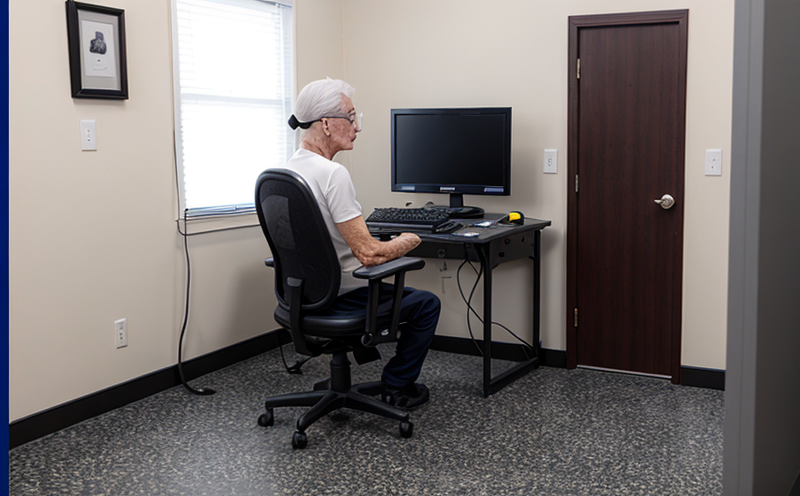BS 5690 Abrasion resistance of upholstery fabrics
The BS 5690 test is a critical procedure used to evaluate the abrasion resistance of upholstery fabrics. This method is part of the British Standard for Upholstery and Textile Products, which ensures that materials meet stringent quality benchmarks in terms of durability and longevity.
During this test, the fabric sample is subjected to mechanical abrasion using a rotating drum or wheel under controlled conditions. The specimen is rubbed against an abrasive surface at specified speeds and pressures until it begins to show signs of wear such as thinning or loss of pile height. The number of cycles required before these changes occur determines the fabric's resistance to abrasion.
Understanding how fabrics perform in real-world environments, including repeated use over time, is essential for manufacturers who aim to produce high-quality products that last longer and retain their aesthetic appeal better. This test helps companies develop materials tailored specifically for demanding applications like automotive interiors or furniture upholstery where extended lifespan and durability are crucial factors.
The abrasion resistance of a fabric can significantly impact its overall performance, particularly when exposed to frequent contact with human skin or other surfaces. Poorly designed fabrics may wear out quickly leading to premature replacement and increased maintenance costs. By incorporating this testing into their development process, manufacturers ensure they are producing robust, long-lasting products that meet both customer expectations and industry standards.
It's important to note that the BS 5690 test focuses primarily on mechanical abrasion rather than chemical degradation. While other tests might address different aspects of fabric durability, such as UV resistance or moisture absorption, this particular standard emphasizes physical wear patterns caused by repeated friction against various surfaces.
| Standard | Description |
|---|---|
| BS 5690:2013 | Method for determining the resistance of fabrics to abrasion by means of a rotary drum apparatus. |
| EN ISO 4649 | Similar method used in Europe, which may provide supplementary insights into fabric behavior under similar conditions. |
The test setup involves precise control over variables such as the weight of the indenter, rotation speed, and duration. These parameters are carefully calibrated to mimic realistic usage scenarios while maintaining consistency across multiple samples. The resulting data provides valuable information about a fabric's performance characteristics which can then be used during design iterations or quality assurance checks.
For example, if a manufacturer wants to improve the abrasion resistance of their upholstery fabrics without compromising comfort or appearance, they could use this test to identify areas where adjustments need to be made. By analyzing the results obtained from various iterations of new designs, engineers can refine their approach until achieving optimal balance between strength and aesthetics.
In conclusion, performing the BS 5690 abrasion resistance test ensures that upholstery fabrics will maintain their integrity over extended periods. This translates directly into customer satisfaction by delivering durable products that meet or exceed expectations regarding longevity and quality standards set forth by relevant bodies like BSI (British Standards Institution).
Applied Standards
| Standard | Description |
|---|---|
| ASTM D3786-15 | American Society for Testing and Materials standard for determining the resistance of fabrics to abrasion by means of a reciprocating motion. |
| I.S.O 4649:2015 | International Organization for Standardization standard providing similar procedures but potentially with updated methodologies based on technological advancements. |
The combination of these standards allows us to offer comprehensive abrasion testing services that cater not only to British markets but also international ones. Our facility supports compliance across multiple jurisdictions ensuring seamless integration into global supply chains.
Why Choose This Test
- Ensures product longevity and durability under real-world conditions.
- Promotes sustainable practices by reducing waste due to premature failure of fabrics.
- Enhances brand reputation through consistent high-quality offerings.
- Aids in meeting regulatory requirements and industry specifications.
The BS 5690 abrasion resistance test is particularly beneficial for manufacturers who want to ensure their products meet strict quality benchmarks. It allows them to identify potential weaknesses early on so corrective measures can be taken before large-scale production begins. Additionally, it provides confidence that once launched into marketplaces, these items will perform reliably over time.
Quality and Reliability Assurance
- Regularly calibrated equipment ensures accurate measurements throughout each test cycle.
- Data collection methods are standardized to maintain consistency between tests.
- Trained personnel operate the machines following strict protocols ensuring reliable results.
Our commitment to quality extends beyond just conducting the BS 5690 abrasion resistance test; we also provide detailed reports that highlight key findings and recommendations for improvement. These documents serve as valuable resources during product development cycles, helping guide decisions towards creating more resilient fabrics.





